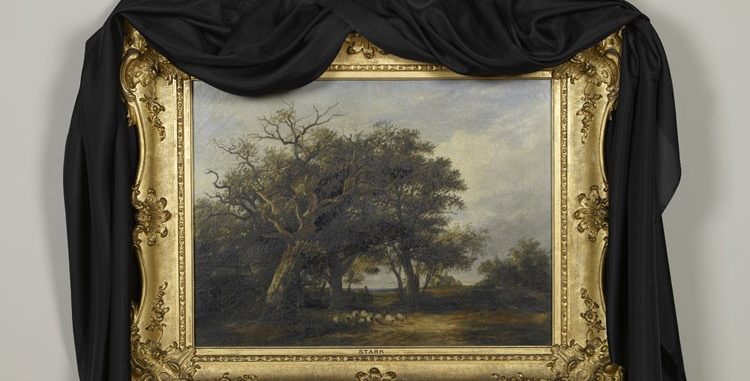What is landscape? Some might say that it’s a human invention – a concept. We frame an experience of our being-in-the-world in a relationship with this thing – landscape – and the complex ideas and associations it arouses mingle with the tangible, physical and emotional dynamics of our very existence. Is landscape something outside of us, or is it actually a part of us?
Landscape becomes everything at once – ecological, political, social, economic, cultural, spiritual… it constantly shifts in scale (micro- to macro-) and meaning. It provides us with senses of identity and (perhaps foolishly) with ideas of ownership, amongst other things. Literally and metaphorically it can be oblique or concrete (or somewhere in-between) according to one’s perception. Landscape is more than just a ‘real’ place in so many ways. Maybe now your understanding of ‘landscape’ has been muddied a bit? Perhaps this is a good thing?!
So, what about a creative and cultural engagement with, and expression of, landscape? Well we have recently been thinking about this and decided to look for examples of books in our list which reflect the diversity of artistic approaches to this anthropocentric endeavour. This gives us the opportunity to celebrate the superb book-making of eight rather different publishers with whom we work closely. Let’s start off our landscape journey by mentioning two really interesting forthcoming publications which are due to arrive in early spring…
The Lie of the Land is published on the occasion of the inaugural exhibition at Milton Keynes Gallery’s new building. It’s a cultural exploration of the transformation of the British landscape from the 17th century to the 21st century. With huge historical scope, this exhibition/book features almost 100 prominent cultural figures including architects such as Norman Foster, Alison and Peter Smithson; and many artists including Tracey Emin, Henry Moore, William Morris, Bridget Riley, and Rachel Whiteread.
Practising Place: Creative & Critical Reflections on Place is the new book from the In Certain Places art-led research project based at the University of Central Lancashire. A superb visual and textual anthology of interdisciplinary dialogues which explore different relationships with place. This book is in itself a special place where art crosses paths with geography, archaeology, history and sociology in timely and playful ways. It also features a foreword by 2017 Turner Prize winner, Lubaina Himid.
Deriving from a sprawling group exhibition at Kunsthaus Graz in 2015, Landscape (although a rater generic title) is a substantial ‘reader’ which is concerned with the representation of the American landscape over the past 60 years. The medium of film is of particular focus in this theoretical volume which features the work of many notable artists including James Benning, Tacita Dean, Ed Ruscha, Robert Smithson, and Ursula Biemann.
The Swiss artist, Ursula Biemann’s first major publication, Mission Reports: Artistic Practice in the Field. Video Works 1998 – 2008 provides a very good example of when an artist’s research practice engages with geopolitical aspects of landscapes through human occupation – addressing the complex political geography of borders, migration and global mobility. This book is the result of Biemann’s exhibitions in 2008 at Arnolfini in Bristol (UK) and Bildmuseet, Umeå University (Sweden).
On the theme of the political and humanitarian aspects of landscape Wolfgang Strassl’s book, Homeland – East Jerusalem Landscapes is a timely reminder of photography’s potential to be a powerful tool in sensitively revealing stories in places of conflict. These documentary photos attend their attention to the contested, scarred urban landscapes of East Jerusalem and the West Bank.
No piece of writing on the subject of ‘art and landscape’ would be complete without a consideration of the practice of walking, would it? Richard Long has, of course, claimed this act as an art-form in itself. As you may well know, we have number of books available on this eminent British artist’s work. However, it’s the STONES CLOUDS MILES: A Richard Long Reader which provides probably the most comprehensive critical account of his pioneering adventures through landscapes since the late 1960s.
Simon Pope’s rather nice, slim-format pocketbook, The Memorial Walks is another bookish celebration of the creative act of walking. In this, the artist invites various writers – poets, novelists, geographers, ecologists, naturalists – to memorise a scene from a landscape painting, which they would then be asked to recall while out walking with Pope to different locations in the East Anglian fenlands. The paintings which inspired these encounters are in collections of Norwich Castle Museum and Art Gallery, and the Collection Museum in Lincoln.
Continuing our journey from the familiar fenlands of East Anglia, we arrive at the vast, cold and unforgiving landscapes around the South Pole as illuminated in the work of Elaine Shemilt. Deep Time is a limited edition book of this print-maker’s fascinating forays into the ‘deep time’ of the dry valleys of Antarctica and the Island of South Georgia. Shemilt’s research crosses the intersection of art and science.
From Pole to Pole – we reach our destination – the Arctic. Just like Antarctica, this extreme polar landscape in the Northern hemisphere is at the frontier of Climate Change. So lastly, but certainly not least it’s important that Cape Farewell’s seminal book, Burning Ice: Art & Climate Change is brought back to our attention. Uniting cutting-edge atmospheric and oceanic scientific research, with accounts of Arctic experiences and inspired artworks, this classic publication provides a human-scale for a rapidly unfolding planetary crisis that often seems too huge to comprehend.
We hope you enjoyed your trip with us. Until next time…
Photo credit: taken from Simon Pope, Memorial Walks (2007/08)


